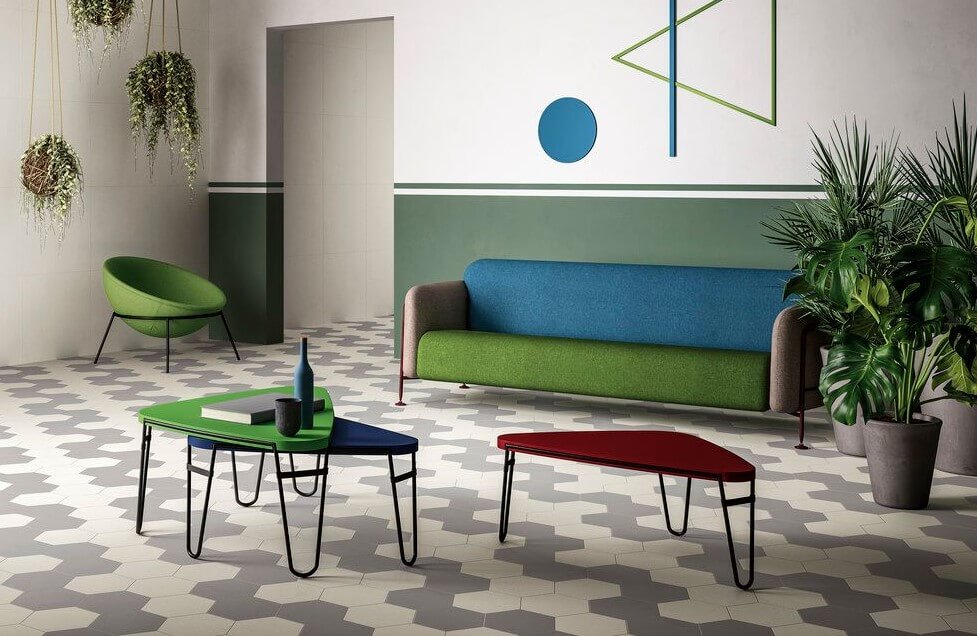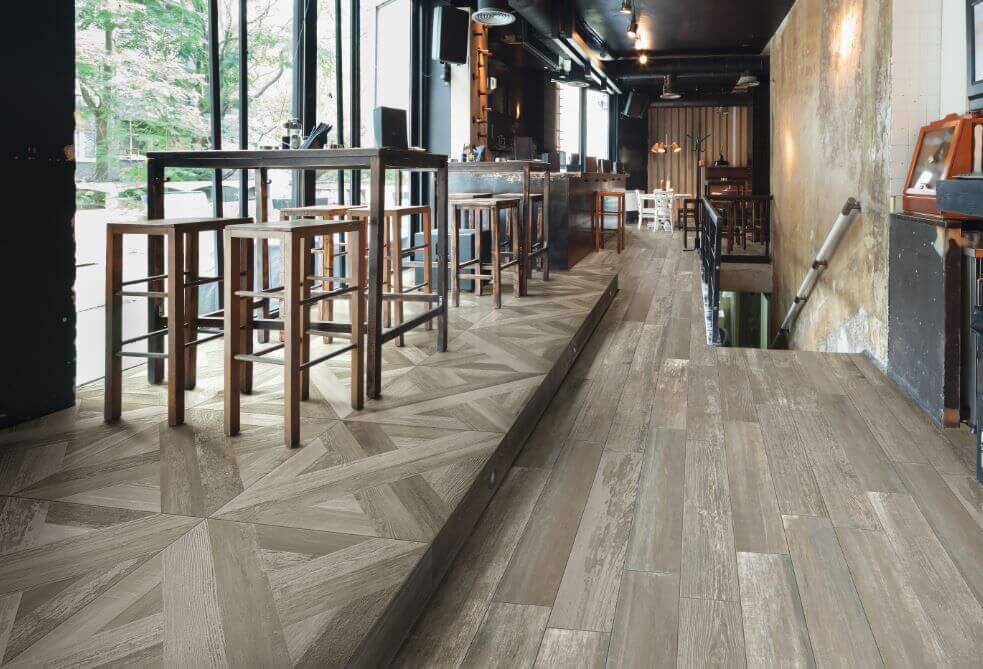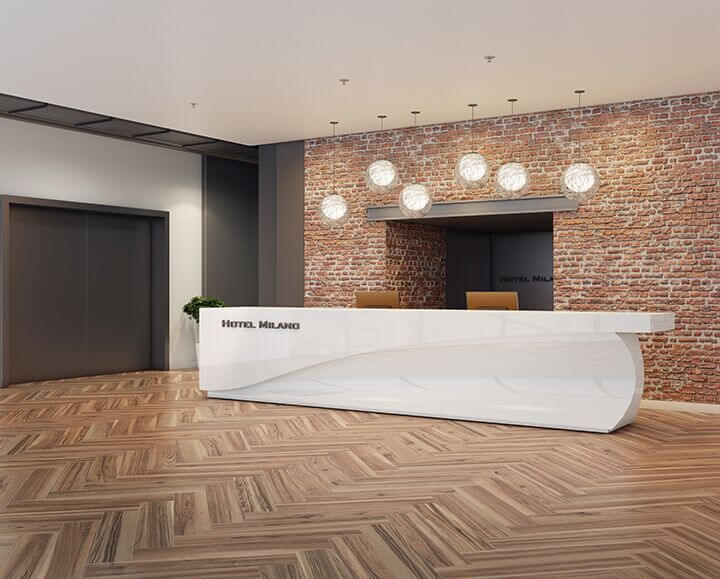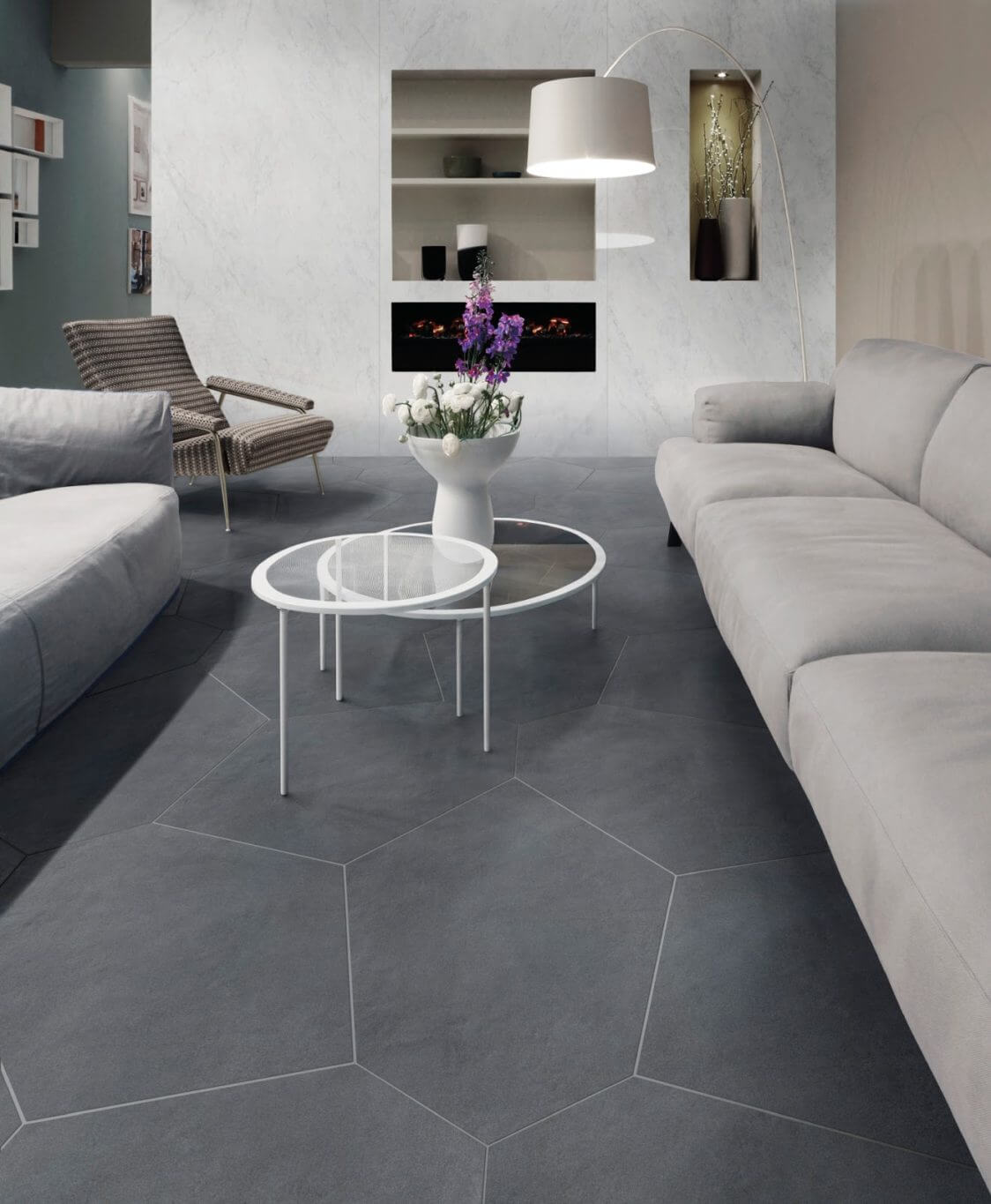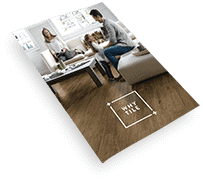Ceramic tile has evolved. While tile has always been known for its durability and ease of maintenance, it is now also recognized for cost savings, functionality, health benefits, and sustainability. Thanks to advances in digital imaging and printing, tile is now the ultimate modern flooring option.
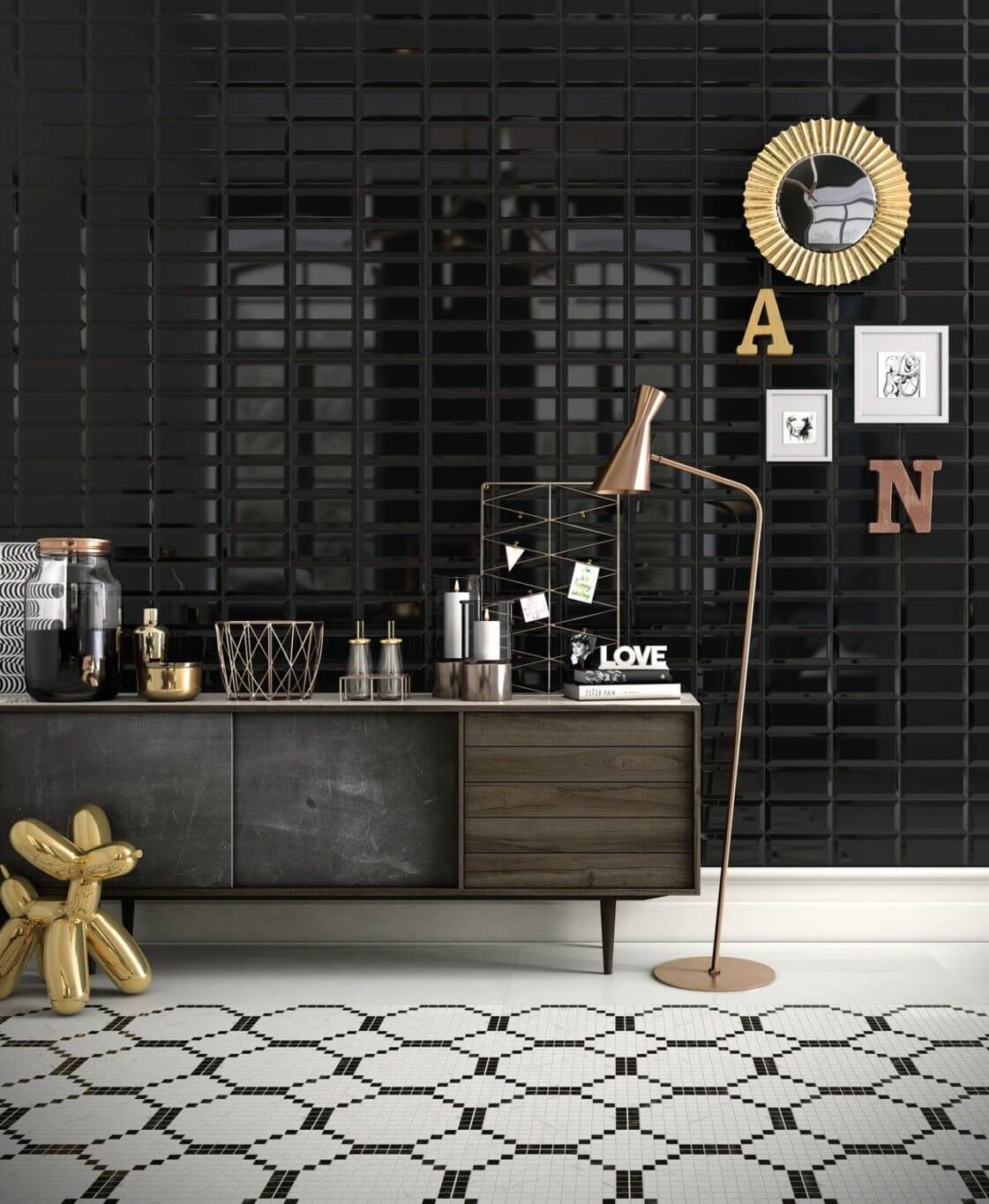
21st Century Convenience
In today’s fast-paced world, efficiency has become more important than ever. No one wants to spend countless hours polishing hardwood floors, spot treating carpets, or dealing with the hassle of replacing damaged vinyl. The flooring option of today needs to facilitate a dynamic lifestyle rather than hinder it.
Efficiency makes ceramic tile the ideal modern flooring option — not only does tile offer limitless designs to choose from, but it also provides the convenience that generations have relied on. Unlike other flooring options, tile has a surface that provides:
- Stain resistance: Tile can handle all of the messes that everyday life throws without being easily stained.
- Water resistance: Properly installed ceramic tile is ideal for using in wet environments, such as a bathroom, kitchen, patio, or pool.
- Scratch resistance: Tile flooring stands up to years of heavy traffic and doesn’t easily scuff, tear, dent, puncture, or gouge.
- Prevention of bacterial growth: Tile is completely inhospitable to bacteria, a critical plus for those with allergies.
- Low maintenance: Ceramic tile is easy to clean. Messes wipe up without harsh chemicals — most with just water!
- Fade resistance: Ceramic tile does not fade, so you can feel free to redecorate and move your furniture at any time.
Learn more about the easy care of ceramic tile from our Top Tile Tips guide.
[Related: Low-Maintenance Benefits of Ceramic and Porcelain Tile]
Unparalleled Versatility, Unprecedented Technology
You may know that ceramic tile has traditionally offered a variety of shapes, colors, and sizes. Recent manufacturing advances with digital imaging have revolutionized tile design, creating virtually limitless design options.
Digital imaging allows a manufacturer to print a design or image directly on the tile’s surface before it is fired. This process bakes into the tile any color, texture, or design you can imagine.
With this innovative technology, it is now possible to create surface textures such as wood, marble, granite, slate, and even fabric textures such as linen and suede.
To be inspired by ceramic tile’s style options, view our Design Gallery.
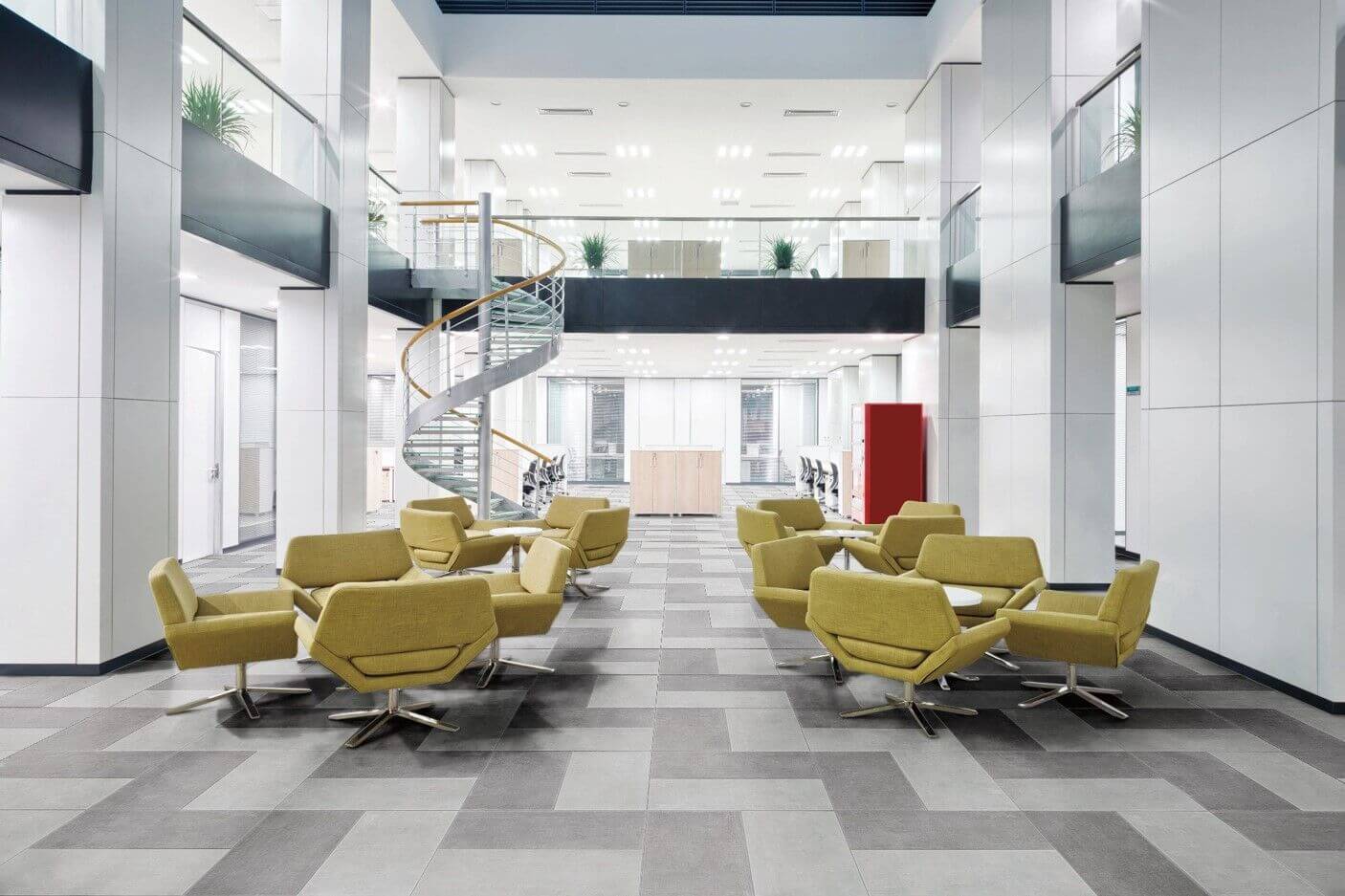
Long-Term Savings
Flooring products come in a wide range of prices and budget is always a contributing factor in a flooring decision. Consumers can choose confidently when using ceramic tile.
A study by Emily Lorenz, PE, F-ACI, an independent cost consultant, analyzed the life cycle costs of various flooring options, including tile, hardwood, laminate, carpet, vinyl, and other popular choices. After appraising initial installation costs, replacement costs where relevant, and custodial maintenance expenses, for each option over its entire life cycle, the study found tile to be the most affordable flooring type. In fact, all types of tile cost less than $0.99 per square foot per year while poured epoxy, VCT, and sheet vinyl flooring were the most expensive over the life of a building. Nylon broadloom carpet, carpet tile, luxury vinyl flooring and rigid core vinyl flooring were also significantly more expensive than the tile options.
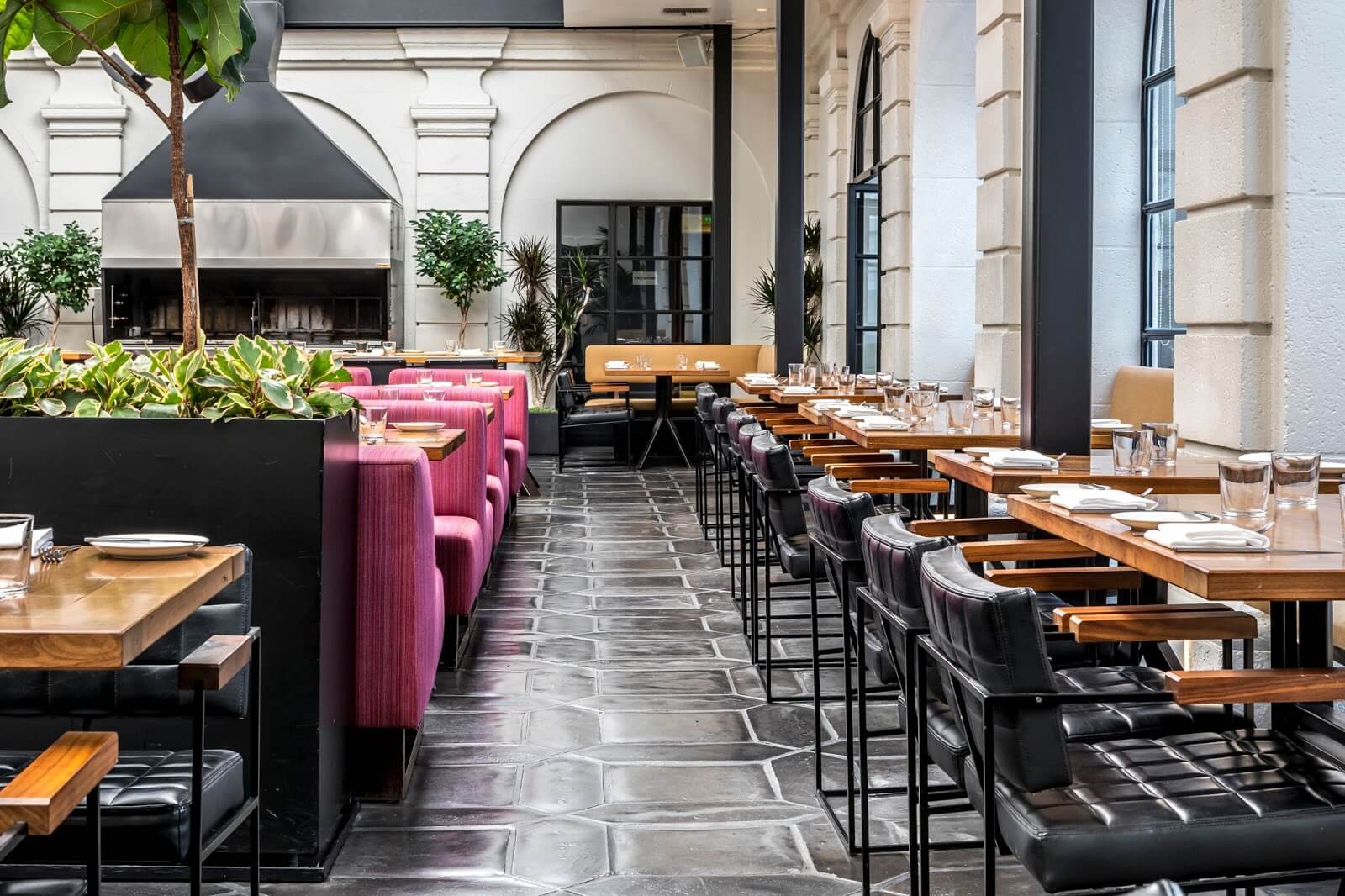
Functionality You Can Trust
Ceramic tile’s slip-resistant and fire-resistant options make it the ideal flooring choice for safety.
Ceramic tile offers a variety of types and finishes to choose from for slip resistance in kitchens, bathrooms, public, and outdoor areas that will experience wet conditions.
Your nonflammable ceramic tile will not melt like some vinyl flooring should there be an unfortunate accident with heat. And, if that accident erupts into a fire, ceramic tile will reduce the spread of flame and won’t smoke, burn, or emit toxic fumes. This safety advantage is especially important for maintaining a clear and safe exit path during a fire. Along with heat-resistance, many tile options are also frost resistant, which gives ideal functionality in extreme temperature conditions, for use indoors and out.
To learn more about flooring safety, read this study conducted by CNA Risk Control.
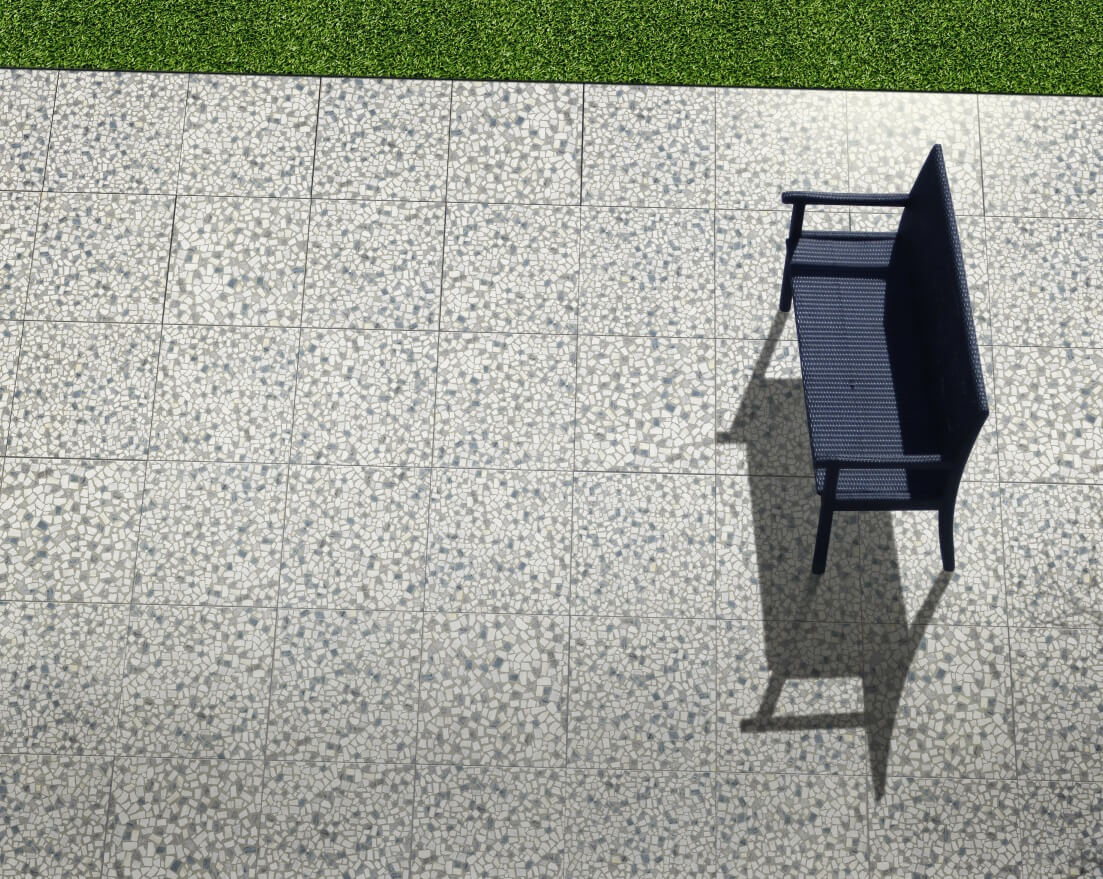
Health Consciousness
In recent years, we’ve become more conscious of our health, and that alertness can extend to all aspects of our lives. While we may know that we need to consider the quality of the food we eat, we also need to consider how flooring contributes to our wellbeing.
Many flooring options contain harmful pollutants that we can no longer overlook. On the contrary, ceramic tile creates a healthy living space, which is key to what makes ceramic tile the modern flooring choice. Ceramic tile contains none of the following contaminants:
- Volatile organic compounds (VOCs): Some VOCs emitted by nonceramic building products can contribute to a wide variety of health problems, including “sick building syndrome.” Because ceramic tile is produced (fired) at extremely high temperatures, producing what is called an “inorganic” material, it has zero VOCs.
- Allergens: Because ceramic tile is inorganic and a hard-fired surface, it won’t absorb dust mites and is inhospitable to bacteria, fungi, mold, and other irritants that contribute to allergies.
- Formaldehyde: Some wood products may contain formaldehyde. Certain levels of formaldehyde can irritate asthma and other respiratory disorders, but ceramic tile does not contain formaldehyde.
- Polyvinyl chloride (PVC): PVC is a resin used in vinyl flooring and is regularly a subject of concern among health experts and builders. Ceramic tile is free of PVC.
- No plastic: Ceramic tile contains no plastic and has none of the health or environmental concerns associated with plastic.
[Related: Health Benefits of Ceramic Tile]
Low Maintenance
Ceramic tile is extremely low-maintenance. Unlike many other flooring options, ceramic tile offers options that are:
- Stain-resistant: Your kitchen is bound to see many messes—ceramic tile doesn’t stain easily!
- Water-resistant: Liquid spills can ruin other flooring types.
- Scratch-resistant: Dents, scrapes, and cuts often seen in other flooring aren’t the same danger for ceramic tile floors, even after years of heavy traffic.
- Bacteria-resistant: Ceramic tile is resistant to the growth of bacteria and other microbes such as mold.
- Antimicrobial: Antimicrobial options can suppress and even destroy harmful microorganisms, such as mold, fungi, bacteria, and viruses.
- Easy to clean: You can easily clean ceramic tile merely by sweeping and/or washing with water.
- Fade-resistant: Ceramic tile does not fade, so you can feel free to redecorate and move your furniture at any time.
[Related: Easy Cleaning Tips for Porcelain and Ceramic Tile]
Sustainable Design
Today, modern and sustainable are practically synonymous. Versatile, durable, low-maintenance, safe, and healthy ceramic tile flooring is the flooring of choice, especially because it is also environmentally-friendly. Compared to other flooring products that need to be replaced more frequently, ceramic tile’s long life means it is both cost-effective and a smart choice for reducing embodied carbon, as well as other negative environmental impacts, such as resource use, and demolition waste.
The following benefits make ceramic tile one of the most eco-friendly flooring options:
- Energy efficiency: Ceramic tile’s intrinsic thermal mass decreases peak heating and cooling in your home, thus limiting temperature swings, reducing the need for your HVAC system, and saving energy.
- Lowest carbon footprint in North America: Ceramic tile is typically made with materials found within 500 miles of the manufacturer, decreasing necessary transportation and associated greenhouse gas emissions and energy. This contributes to North American ceramic tile having the lowest carbon footprint of all flooring options.
- Recycling: Because ceramic tile is made of naturally occurring materials, it typically meets the requirements for clean fill. Disposing of ceramic tile means you are not contributing to the growing landfill problem associated with plastics.
- Endurance: Tile’s lifetime can span generations. This durability limits the need to create new flooring materials, which would require additional resources.
Green Squared CertifiedⓇ is a multi-attribute sustainability standard that uses the American National Standards Institute (ANSI) process to evaluate the sustainability of tile and tile installation products. Green Squared uses the transparency and consensus of the ANSI process combined with third-party certification to evaluate, validate, and communicate products that have a positive impact on the environment and society.
Use GreenSquareCertified.com’s free search tool to help you locate green certified products. Look for the Green Squared Certified® emblem on the packaging of tile products you are planning to purchase for easy recognition of sustainable tiles and tile installation materials.
The Green Squared certification has established sustainability criteria for products throughout their full life cycle, including manufacturing, end-of-use management, corporate governance, and new technology.
To learn more about the sustainability of ceramic tile, read Ceramic Tile’s Answer to the Plastic Problem, Celebrate Earth Day Every Day With Green Squared Certified Products, Tile: The Natural Choice.

[Related: Guide to Going Green With Ceramic Tile]
Historic Durability in Modern Form
Tile has a heritage that no other flooring option can match. For thousands of years, ceramic tile has facilitated the progress of our culture — from creative expression to commerce — and has been the defining element in our greatest architecture and historical icons.
From ancient empires to modern mansions, we’ve continued using ceramic tile because of its incredible durability and the beauty of craftsmanship that only comes with hand-laid ceramic tile.
The cost study conducted by Emily Lorenz, PE, F-ACI, lists tile as one of the longest-lasting flooring options available. When compared to all vinyl flooring (LVF, rigid core, sheet and VCT), engineered wood, carpet, laminate and poured epoxy, ceramic tile lasts three to five times longer.
To learn more about the historic durability of ceramic tile, read about tile history and notable tile installations.
The Floor of the Future
As trends change and other flooring types fall in and out of favor, ceramic tile has remained one of the most trusted flooring solutions. With the help of modern printing and manufacturing developments, ceramic tile will continue to stay in the forefront of technology to offer unmatched versatility and design.
Take advantage of ceramic tile’s beauty, durability, and easy maintenance and download our free Tile Buying Guide now to get started.

